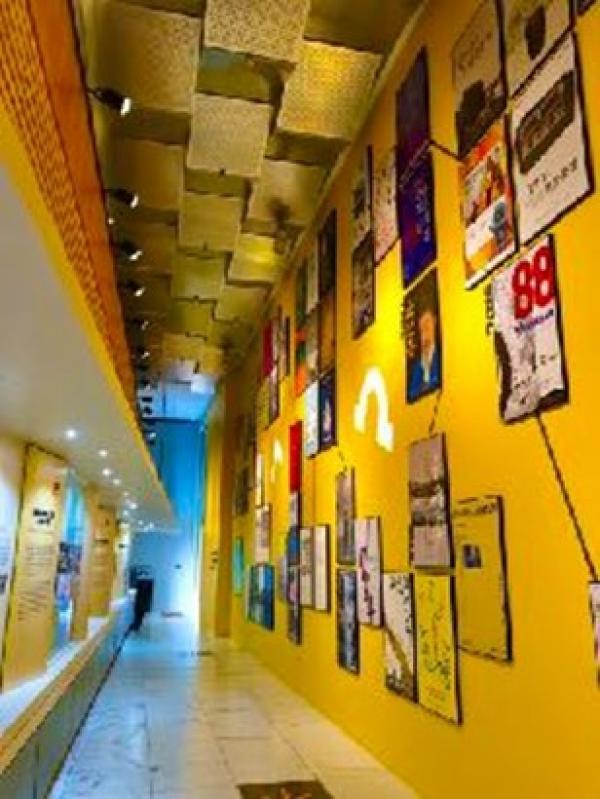Healthy Living in Seoul
Published 08/08/2023 in Scholar Travel Stipend
Written
by Caroline Chiu |
08/08/2023

This past April, I had the incredible opportunity to revisit Seoul, a city that I had the privilege of traveling to five years ago. During my first visit in 2018, my attention was drawn to the world of Korean pop (K-pop) and its influence on Korean society—a topic highly relevant to my work at the time as a Manager at VICE Media developing live experiences. This time, however, my return to Korea was influenced by the last two years I’ve spent as a medical student. In general, studying health and medicine has inspired the focus of all my recent travels.
I've become deeply curious by how cities around the world promote health and well-being through urban planning and public policy so that one day I can take those learnings and contribute to public health both on the clinician-level and also at the public-health level.
One of the most significant takeaways from my two years as a medical student is the deep connection between mental and physical health. As a result, I was struck by Seoul’s thoughtful investment in embracing its history and culture. Though it may not be apparent amidst its shiny and bright buildings and cheery K-pop performers, Seoul and Korea as a whole has endured significant trauma and change throughout its history, most recently the Japanese occupation during the World Wars and the Korean War. However, instead of shying away from these painful events, Seoul embraces its history and uses it as a means of healing and acknowledging past atrocities. One remarkable example is the Seoul Museum of History, which not only offers free admission to all but also provides guided tours. This accessibility not only helps citizens understand their heritage but also fosters a sense of collective healing and empathy.
Wandering through the museum's halls, I found the exhibitions both impactful and poignant. The depiction of the city's struggles and triumphs since it was first established on the banks of the Han River was a powerful experience. As I listened to the local tour guide explain to me why she chooses to volunteer her precious downtime to volunteer at the museum and share her favorite exhibits with locals and tourists alike, it became evident that Seoul's preservation and sharing of its history goes beyond mere nostalgia; it aims to help its citizens grapple with the past and build a more united and empathetic community. Such awareness and acknowledgement of historical trauma contributes to mental well-being, fostering resilience and a sense of identity among the city's residents.
Another crucial lesson I’ve learned through medical school is the potential of food as medicine. Seoul's vibrant yet healthy food scene impressed me, particularly the ubiquitous presence of kimchi, a traditional Korean dish that accompanied nearly every meal I had. The abundance of probiotics and essential nutrients in kimchi provides numerous health benefits, from improved gut health to a strengthened immune system. It was a refreshing change to find that even though I ate out nearly every meal, I didn't experience the usual negative effects I do when I eat out in New York City from the heavier spices, oils, and salt content.
Moreover, the Korean cultural practice of having "banchan," an array of side dishes, is another way Korean food culture promotes gut health. Banchan incorporates various vegetables, including kimchi, and other nutritious dishes, offering a balanced and flavorful dining experience. The inclusion of different ingredients in banchan ensures that the gut is exposed to a wide range of beneficial nutrients and probiotics, contributing to a thriving and resilient digestive system.
One other lesson medical school has taught me is the healing potential of simply being outside. As a result, I was pleased by by Seoul's thoughtful development of outdoor spaces. For example, the recent transformation of the Cheonggyecheon River into a beautiful urban park exemplifies the city's commitment to providing its residents with opportunities to connect with nature and engage in outdoor activities.
As I walked along the riverbank, I witnessed families picnicking on the lush green grass, friends gathering for leisurely walks, and individuals indulging in various recreational activities. It was heartening to see the city's commitment to making these outdoor spaces accessible to all. Restrooms were easily accessible, and seating areas were ample, which catered to the needs of families with young children, seniors, and individuals with mobility challenges, ensuring that everyone could enjoy the outdoors without feeling restricted or inconvenienced.
Research has shown that spending time in green spaces can reduce stress, anxiety, and depression while boosting mood and cognitive function. By providing accessible and inviting outdoor areas, Seoul encourages its residents to lead more active and balanced lives, underscoring the city's commitment to promoting holistic well-being. I've experienced this phenomenon for myself every time I visit the High Line in New York City—one of my favorite destinations in Manhattan. It is wild to remember that the High Line did not exist until I was in high school, and now we’ve reclaimed unused space into a beautiful park that provides respite from hectic city living. The Cheonggyecheon River Restoration Project has done the same for Seoul’s citizens.
In conclusion, my recent trip to Seoul added another layer to my understanding of the city since my last visit five years ago. In particular, I’ve gained a deeper appreciation for the city's commitment to health and well-being. Its investment in history and culture, emphasis on healthy food culture, and dedication to outdoor spaces all contribute to the overall happiness and well-being of its residents, and drive home the idea that investments in museums, food, and parks are essential for healthy city development.


